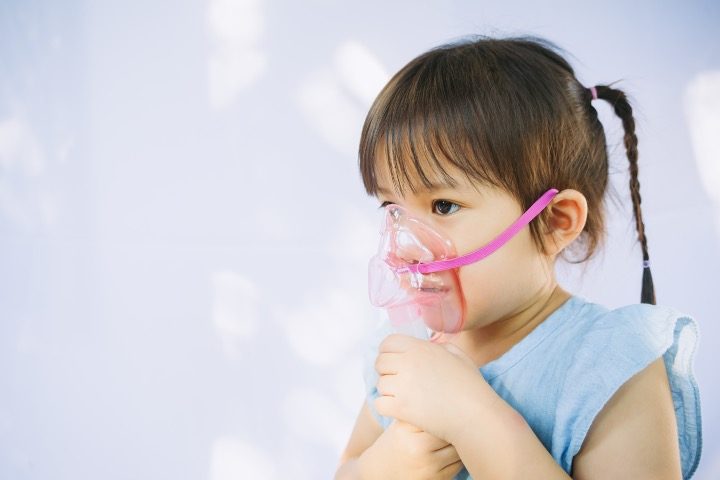
Is another pandemic in the works?
In China, the World Health Organization (WHO) has requested that Beijing provide further information about what they say is a potentially alarming spike in pneumonia and respiratory illnesses in children, though Chinese officials currently say they have not yet found any “unusual or novel diseases.”
As the Associated Press reports, WHO, a United Nations agency, raised the alarm in response to unspecified media reports and a global infectious disease monitoring service, both of which claimed that there have been significant clusters of undiagnosed pneumonia among children in China’s northern region. WHO this week asked that China provide it with more information on the matter.
Scientists from outside China who were consulted agreed that the situation merits monitoring, but said the situation is not yet indicative of another pandemic.
Health experts say the development in China is one to be looked at, as new flu strains and other pandemic-triggering viruses often originate with undiagnosed respiratory-illness clusters such as those presently being detected in northern China. For example, both Covid-19 and SARS began as reports of unusual pneumonia strains.
WHO also pointed to the fact that authorities with China’s National Health Commission announced on November 13 that they have seen a rise in respiratory illnesses, which they attribute to the relaxing of Covid-related restrictions. Other nations have experienced similar spikes in respiratory illnesses, including respiratory syncytial virus (RSV), upon rescinding pandemic restrictions.
WHO reported holding a phone conference on Thursday with Chinese officials, during which the agency made its request of data. The information given to it confirmed that, since October, there has been an escalation in child hospital admissions for diseases such as bacterial infection, flu, RSV, and the common cold.
“No changes in the disease presentation were reported by the Chinese health authorities,” WHO said in a statement, adding that, per Chinese officials, the rise in child hospitalization numbers has not overwhelmed hospital capacities.
AP spoke to Dr. Paul Hunter, a professor of medicine at Britain’s University of East Anglia, who gave his opinion that the spike in infections does not stem from a new disease.
Said Hunter: “If it was (a new disease), I would expect to see many more infections in adults. The few infections reported in adults suggest existing immunity from a prior exposure.”
Another health professional, Francois Balloux of University College London, explained to AP that the figures are probably owing to the fact that this is the first winter since the lockdowns were done away with and these restrictions had reduced children’s immune systems.
The outlet further reported:
WHO said that northern China has reported a jump in influenza-like illnesses since mid-October compared to the previous three years. It is rare for the U.N. health agency to publicly ask for more detailed information from countries, as such requests are typically made internally. WHO said it requested further data from China via an international legal mechanism.
According to internal accounts in China, the outbreaks have swamped some hospitals in northern China, including in Beijing, and health authorities have asked the public to take children with less severe symptoms to clinics and other facilities.
The average number of patients in the internal medicine department at Beijing Children’s Hospital topped 7,000 per day, exceeding the hospital’s capacity, state-owned China National Radio said in an online article earlier this week.
Due to crowding and long wait times at large hospitals, China’s National Health Commission in a Q&A advised that children with mild symptoms first be taken to primary care clinics and the pediatric departments at hospitals.
Ultimately, WHO said it lacks enough information to work with to fully and accurately determine the dangers these cases of respiratory illnesses in children might pose. The agency also contended that it has previously had to deal with a lack of cooperation from China about when new viruses have emerged.
In one example, following the outbreak of SARS in 2002 in south China, the country’s public officials actually instructed doctors to hide patients during WHO scientists’ presence in the country, even going so far as to have patients driven around in ambulances to keep them out of sight. When these practices became public, WHO threatened to close its offices in China.
And, of course, China infamously waited to share information about Covid-19 with WHO until after the virus had become widespread. Due to the lack of communication, WHO at first praised China’s handling of the virus, only for it to start popping up all over the world shortly thereafter.
“While WHO seeks this additional information, we recommend that people in China follow measures to reduce the risk of respiratory illness,” WHO advised, adding a recommendation for Chinese to get vaccinated, use face masks, and self-isolate.
These globalist health “authorities” arguably exacerbated the social damage of Covid-19 with their recommendations of draconian government policies. Four years after the coronavirus outbreak, and with another American presidential election in sight, are they gunning for a repeat?





